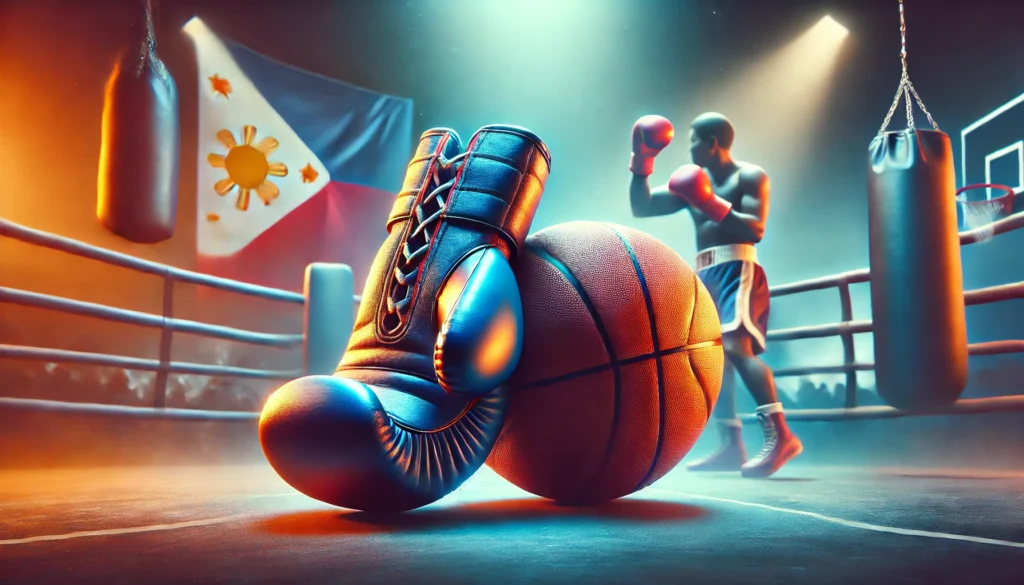The history of sports in the Philippines dates back to the pre-colonial era. Indigenous games and physical activities were integral parts of Filipino culture long before Western influences arrived. These traditional sports and games were often tied to religious rituals, community celebrations, and daily life. Some examples include arnis (stick fighting), sipa (kick ball), and various forms of wrestling.
Spanish Colonial Period
During the Spanish colonial period (1565-1898), new sports were introduced to the Philippines. Cockfighting, for instance, became immensely popular during this time and remains so to this day. The Spanish also brought bullfighting, although it never gained the same level of popularity as in Spain. Towards the end of the Spanish era, Western sports like tennis and cricket began to appear in the country, primarily among the elite classes.
American Colonial Era
The American colonial period (1898-1946) marked a significant turning point in Philippine sports history. The Americans introduced a wide range of sports, including baseball, football, and most notably, basketball. The American education system, which emphasized physical education, played a crucial role in popularizing these sports among Filipinos.
The Rise of Basketball in the Philippines
Introduction and Early Popularity
Basketball was introduced to the Philippines in 1910 by the YMCA. The sport quickly gained popularity, particularly in schools and universities. Its accessibility, relatively simple rules, and the fact that it could be played in small spaces made it an instant hit among Filipinos.
First National Team
In 1913, the Philippines fielded its first national basketball team for the Far Eastern Championship Games. This marked the beginning of the country’s long-standing love affair with the sport at the international level.
Professional Basketball
The Philippine Basketball Association (PBA) was founded in 1975, becoming Asia’s first professional basketball league. This further solidified basketball’s place in Filipino culture and provided a platform for local talent to shine.
Table: Key Milestones in Philippine Basketball History
| Year | Event |
|---|---|
| 1910 | Basketball introduced by YMCA |
| 1913 | First national team formed |
| 1936 | Philippines participates in Olympic basketball for the first time |
| 1954 | Philippines wins bronze at FIBA World Championship |
| 1975 | Philippine Basketball Association (PBA) founded |
| 2013 | Gilas Pilipinas qualifies for FIBA World Cup after 40-year absence |
International Success
The Philippines has enjoyed considerable success in international basketball, particularly in Asia. The national team has won multiple gold medals in the Asian Games and has been a consistent top performer in the FIBA Asia Championship.
Cultural Impact
Basketball has become more than just a sport in the Philippines; it’s a cultural phenomenon. Street basketball courts can be found in almost every barangay (village), and the sport is played by people of all ages and social classes. NBA games are widely watched, and Filipino players who make it to the NBA, like Jordan Clarkson, are celebrated as national heroes.
The Boxing Legacy of the Philippines
Early Days of Boxing
Boxing was introduced to the Philippines during the American colonial period. It quickly gained popularity, with Filipino boxers showing natural talent and aptitude for the sport.
First Filipino World Champion
In 1923, Pancho Villa became the first Filipino and Asian to win a world boxing title when he claimed the World Flyweight Championship. This historic achievement paved the way for future generations of Filipino boxers.
Golden Age of Philippine Boxing
The 1960s and 1970s saw a surge in Filipino boxing talent. Fighters like Flash Elorde, who held the world junior lightweight title for seven years, and Ceferino Garcia, credited with inventing the “bolo punch,” brought international recognition to Philippine boxing.
The Pacquiao Era
No discussion of Philippine boxing would be complete without mentioning Manny Pacquiao. Rising from poverty to become one of the greatest boxers of all time, Pacquiao’s career has had an immeasurable impact on Philippine sports and society. He is the only boxer in history to win world titles in eight different weight divisions.
Table: Notable Filipino World Boxing Champions
| Boxer | Weight Class | Year of First World Title |
|---|---|---|
| Pancho Villa | Flyweight | 1923 |
| Flash Elorde | Junior Lightweight | 1960 |
| Rolando Navarrete | Junior Lightweight | 1981 |
| Luisito Espinosa | Bantamweight | 1989 |
| Manny Pacquiao | Flyweight | 1998 |
| Nonito Donaire | Flyweight | 2007 |
| Donnie Nietes | Minimumweight | 2007 |
Impact on Society
Boxing has provided a path out of poverty for many Filipinos. Success stories like Pacquiao’s have inspired countless young Filipinos to take up the sport. Boxing gyms have sprung up across the country, and amateur boxing programs are common in schools and communities.
The Intertwining of Basketball and Boxing in Filipino Culture
National Identity
Both basketball and boxing have become integral parts of Philippine national identity. Success in these sports on the international stage is a source of immense national pride.
Social Mobility
Both sports are seen as potential pathways to social mobility. Many young Filipinos dream of becoming professional basketball players or boxers as a means to lift themselves and their families out of poverty.
Media Coverage and Fan Culture
Basketball and boxing dominate sports media coverage in the Philippines. Major games and fights are national events, often bringing the country to a standstill. Fan culture around these sports is passionate and deeply ingrained in daily life.
Challenges and Controversies
Overemphasis on Basketball and Boxing
While the popularity of basketball and boxing has brought many benefits, some critics argue that it has led to the neglect of other sports. This overemphasis may limit the Philippines’ potential success in a broader range of international sporting events.
Match-fixing and Corruption
Like many countries, the Philippines has faced issues with match-fixing and corruption in sports, particularly in basketball. Efforts to combat these problems have been ongoing, with varying degrees of success.
Brain Drain in Basketball
The allure of higher salaries and greater exposure has led many top Filipino basketball players to play in foreign leagues, particularly in other Asian countries. This “brain drain” has at times weakened the domestic league and national team.
The Future of Philippine Sports
Diversification of Sports
While basketball and boxing remain dominant, recent years have seen growing interest in other sports. Football (soccer) has gained popularity, and success in sports like weightlifting and gymnastics at the Olympics has broadened the sporting landscape.
Investment in Grassroots Programs
There has been increased focus on developing grassroots sports programs to nurture talent from a young age. This approach aims to create a stronger foundation for Philippine sports across various disciplines.
Leveraging Technology
The rise of e-sports and the integration of technology in traditional sports training and performance analysis present new opportunities for Philippine sports development.
Conclusion
The history of Philippine sports, particularly the passion for basketball and boxing, reflects the country’s complex cultural heritage and its journey through colonial influences to forging its own unique sporting identity. These sports have not only provided entertainment and national pride but have also served as vehicles for social mobility and cultural expression.
As the Philippines continues to evolve in the global sporting arena, the legacy of basketball and boxing will undoubtedly play a crucial role in shaping the future of Philippine sports. While challenges remain, the passion and talent of Filipino athletes, combined with strategic development and investment, promise an exciting future for sports in the Philippines.
Disclaimer: This article aims to provide an accurate overview of the history of Philippine sports, focusing on basketball and boxing, based on information available up to 2023. Sports history is complex and continually evolving. Readers are encouraged to report any inaccuracies or provide additional information for prompt review and correction. The aim is to maintain the most up-to-date and accurate information possible.




